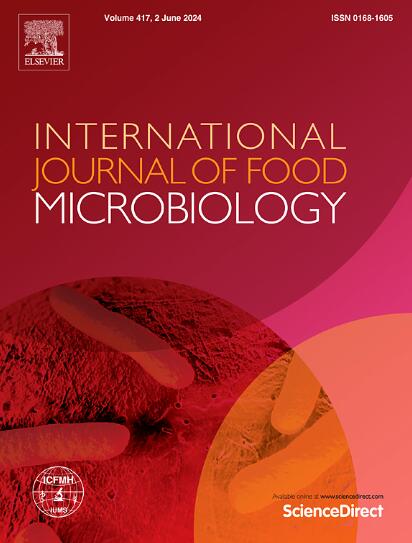The putative Rho guanine nucleotide exchange factor GerA in Aspergillus flavus regulates growth, development, and aflatoxin synthesis
IF 5
1区 农林科学
Q1 FOOD SCIENCE & TECHNOLOGY
International journal of food microbiology
Pub Date : 2025-06-05
DOI:10.1016/j.ijfoodmicro.2025.111302
引用次数: 0
Abstract
Aspergillus flavus is a saprophytic fungus that infects seed crops before and after harvest, producing potent carcinogens known as aflatoxins. Consequently, the urgent need arises to develop control strategies to mitigate the adverse effects associated with A. flavus. The Ras homologue family member GTPases (Rho GTPases) play a crucial role in regulating the developmental and pathogenic processes of filamentous fungi by controlling various signal transduction pathways. Rho guanine nucleotide exchange factors (GEFs) activate Rho GTPases and regulate their conformational conversion from GDP to GTP. In a previous study, a Rho GEF GerA that is closely regulated by the global regulator VeA under different culture conditions was identified by chromatin immunoprecipitation and sequencing (ChIP-seq), which contains a characteristic Dbl homology (DH) domain. GerA exhibits a high degree of conservation within Aspergillus species but lacks homologues in Saccharomyces cerevisiae. The generation of the ΔgerA mutant using CRISPR/Cas9 gene editing tools significantly impacted the synthesis of AFs, reproductive processes, and pathogenicity in A. flavus. Notably, the ΔgerA mutant exhibited polarity loss and impaired septation. Combined with yeast two-hybrid analysis, there is speculation that GerA may function as a Rho4 GEF. The significant involvement of gerA in the morphological development and secondary metabolism of A. flavus highlights its potential as a target for control measures. Moreover, this study establishes a basis for further investigating the roles of other Rho GEFs in filamentous fungi.
推测的Rho鸟嘌呤核苷酸交换因子GerA在黄曲霉调节生长,发育和黄曲霉毒素合成
黄曲霉是一种腐生真菌,在收获前后感染种子作物,产生强致癌物黄曲霉毒素。因此,迫切需要制定控制策略,以减轻与黄曲霉相关的不良影响。Ras同源家族成员GTPases (Rho GTPases)通过控制多种信号转导途径,在丝状真菌的发育和致病过程中发挥重要作用。Rho鸟嘌呤核苷酸交换因子(gef)激活Rho gtpase,并调节其从GDP到GTP的构象转化。在之前的一项研究中,通过染色质免疫沉淀和测序(ChIP-seq)鉴定了一个在不同培养条件下受全局调节因子VeA密切调节的Rho GEF GerA,该GerA含有一个特征Dbl同源性(DH)结构域。GerA在曲霉种中表现出高度的保守性,但在酿酒酵母中缺乏同源物。利用CRISPR/Cas9基因编辑工具生成ΔgerA突变体显著影响了黄曲霉AFs的合成、繁殖过程和致病性。值得注意的是,ΔgerA突变体表现出极性丧失和分离受损。结合酵母双杂交分析,推测GerA可能具有Rho4 GEF的功能。gerA在黄曲霉的形态发育和次生代谢中的重要作用突出了其作为防治措施靶点的潜力。此外,本研究为进一步研究其他Rho GEFs在丝状真菌中的作用奠定了基础。
本文章由计算机程序翻译,如有差异,请以英文原文为准。
求助全文
约1分钟内获得全文
求助全文
来源期刊
CiteScore
10.40
自引率
5.60%
发文量
322
审稿时长
65 days
期刊介绍:
The International Journal of Food Microbiology publishes papers dealing with all aspects of food microbiology. Articles must present information that is novel, has high impact and interest, and is of high scientific quality. They should provide scientific or technological advancement in the specific field of interest of the journal and enhance its strong international reputation. Preliminary or confirmatory results as well as contributions not strictly related to food microbiology will not be considered for publication.

 求助内容:
求助内容: 应助结果提醒方式:
应助结果提醒方式:


